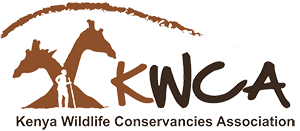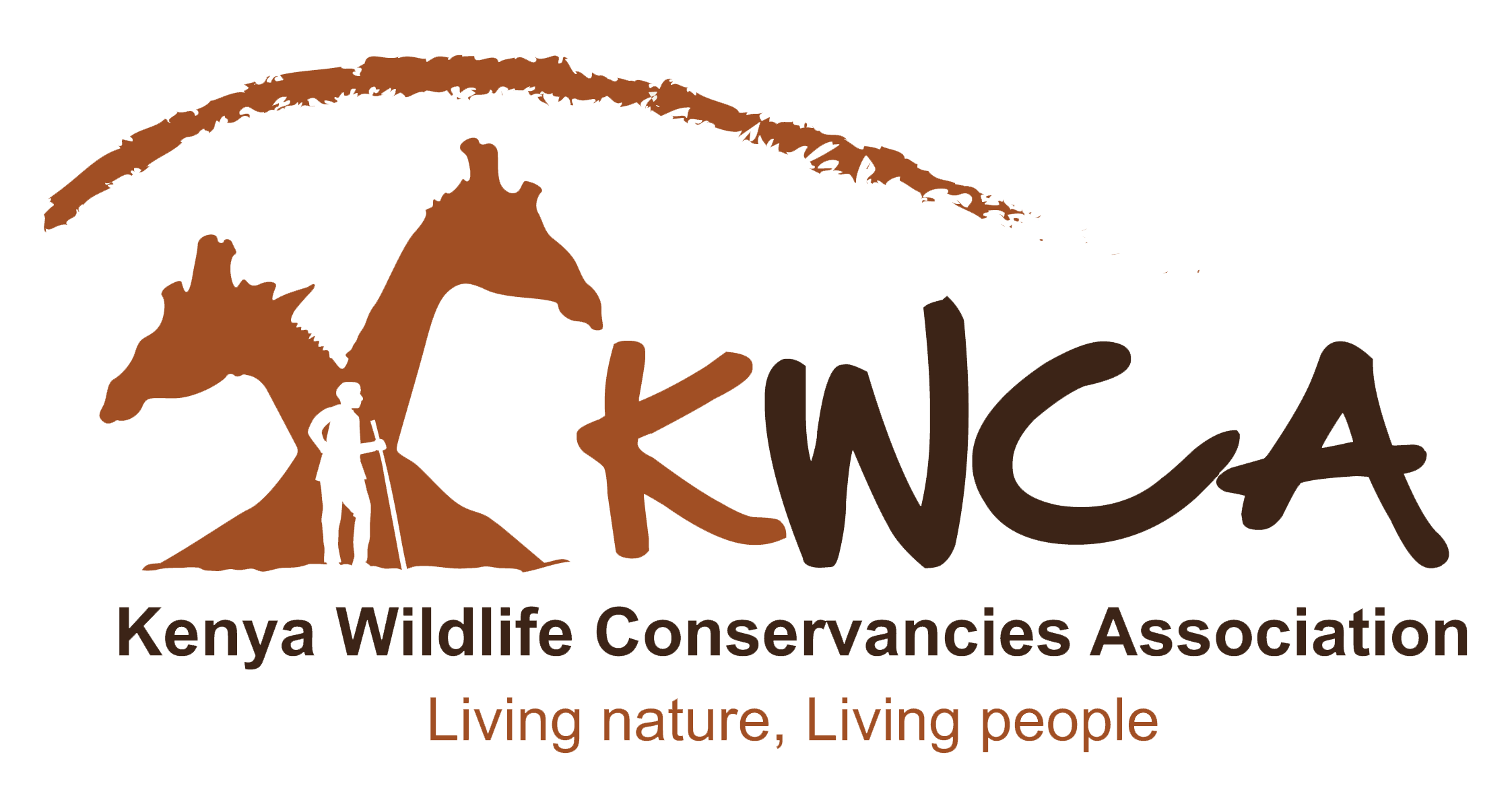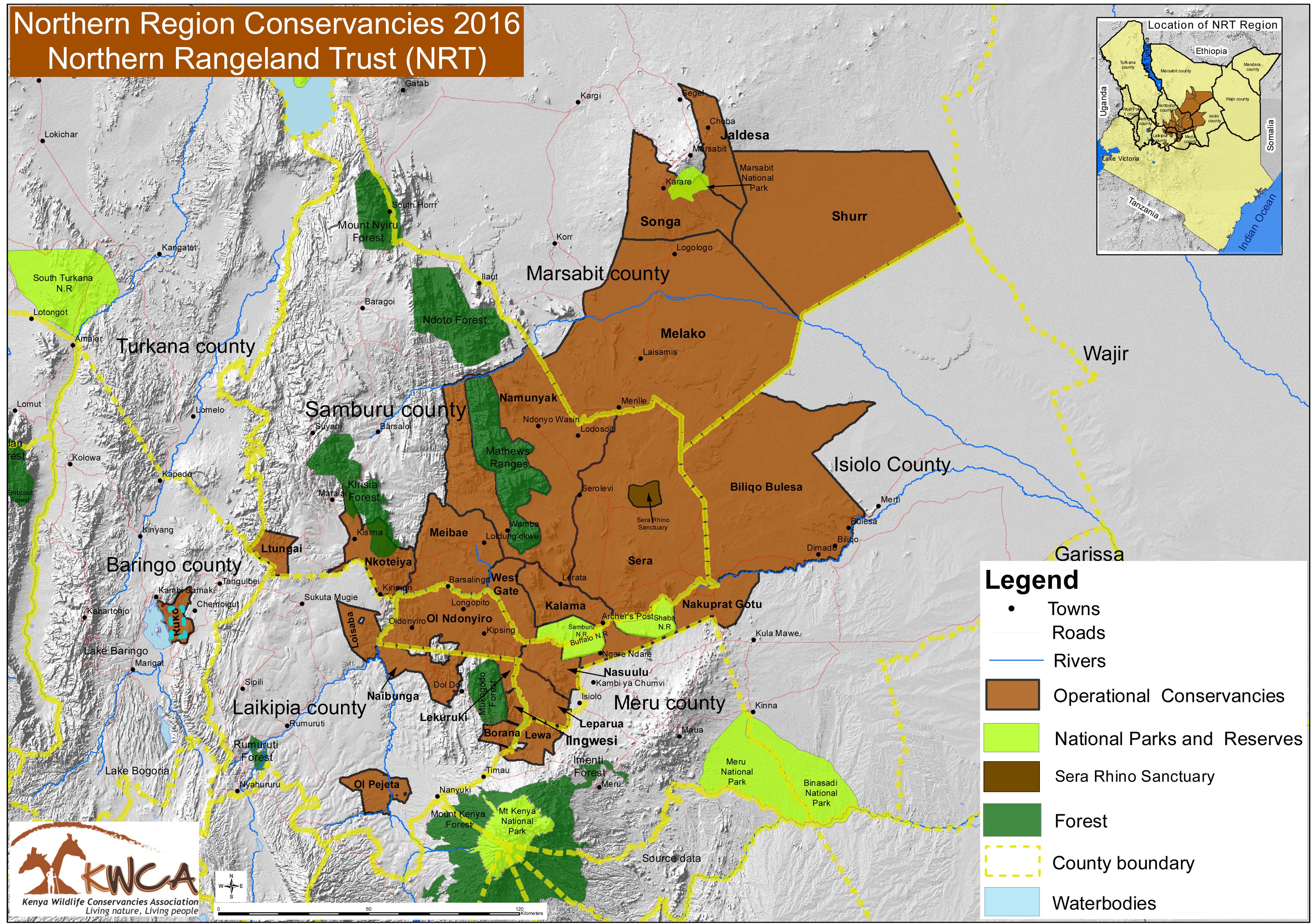Northern Rangelands Trust
Association Summary
The Northern Rangelands Trust covers 4.9 million ha of land across Northern Kenya and the Coast. It supports 33 community conservancies that host 460,000 pastoral communities from approximately 11 dominant tribes. NRT’s mission is to build resilient community conservancies, transform lives, and secure peace and conserving natural resources.
- Awer Community Conservancy
- Biliqo-Bulesa
- Hanshak Nyongoro Conservancy
- Il Ngwesi Group Ranch
- Ishaqbini
- Jaldesa Community Conservancy
- Kainuk
- Kalama Community Wildlife Conservancy
- Katilu
- Kiunga Marine Community Conservancy
- Lekurruki Conservation Ltd
- Leparua Community Conservancy
- Lochakula
- Lokichar
- Lower Tana Delta Conservation trust
- Ltungai Community Conservancy
- Masol
- Meibae Community Conservancy
- Melako
- Mpuskutuk Community Wildlife
- Conservancy
- Naibunga Conservancy Trust
- Nakuprat-Gotu Community Conservancy Ltd
- Namunyak
- Nasuulu Community Conservancy
- Ndera Community Conservancy
- Ngare Ndare
- Pate Island Conservation Group
- Pellow
- Sera Community Conservancy
- Shurr
- Songa Community Conservancy
- Westgate Community Conservancy
NRT supports it members in a number of ways:
It raises funds for the conservancies. In 2016, NRT supported conservancies with a total of Ksh 854 million for conservancy operations. It seeks to create financial sustainability, with the hope that conservancies are able to finance a third of the operations through commercial enterprise, a third through government funding and a third through donor funding. County governments, such as Samburu and Marsabit, have historically provided significant infrastructure development grants to conservancies, but in 2016 a new 50% cost-share model with the Samburu county government has been developed to support operational budgets in Nkoteiya. This shows a remarkable step in creating deeper engagements and practical development agendas at the county level.
NRT provides conservancies with operational support through a network of regional managers, rangeland coordinators and research and monitoring officers. NRT monitors the management and programmatic performance providing landowners and donors with a degree of assurance and oversight.
- Regional Directors provide governance and management support to conservancy management and boards. They ensure that conservancies operate as legal entities in a transparent and equitable way for its members. They attend meetings and act as a sounding board and problem solvers for conservancy management.
- Rangeland coordinators work with conservancy staff to plan annual wet and dry season grazing plans at a conservancy and regional level. Conservancies form contiguous spaces for pastoral movement, and frequently experience movements of livestock from outside. This requires proper planning to direct and track movement and numbers, and estimate the availability of pasture. Additionally, 70% of these rangelands have been classified as severely degraded. NRT, is working with the Grevy’s Zebra Trust to rehabilitate rangelands through planned grazing, bunched herding and grass re-seeding. 869 hectares have been cleared and reseeded since 2012.
The Grevy’s Zebra Trust was established to address an urgent need to conserve Grevy’s Zebra (Equus grevyi) in the community rangelands of Kenya and Ethiopia.
Ewaso Lions is dedicated to conserving lions and other large carnivores by promoting co-existence between people and wildlife.
Lewa Wildlife Conservancy is the heart of wildlife conservation, sustainable development and responsible tourism in northern Kenya and our successful working model has provided the framework on which many conservation organizations in the region are based.
GIZ is working with local and international partners to train young people on technical and vocational education and training, to equip them with appropriate skills to meet the demands of the labor market, especially the private sector. Other areas of support include renewable energy, good governance with a focus on combating corruption, peace-building and migration management.
Ol Pejeta Conservancy is a caretaker of the land, safeguarding endangered species and ensuring the openness and accessibility of conservation for all through innovation and empowerment.
- Conservancies Supported
-
- Awer Community Conservancy
- Biliqo-Bulesa
- Hanshak Nyongoro Conservancy
- Il Ngwesi Group Ranch
- Ishaqbini
- Jaldesa Community Conservancy
- Kainuk
- Kalama Community Wildlife Conservancy
- Katilu
- Kiunga Marine Community Conservancy
- Lekurruki Conservation Ltd
- Leparua Community Conservancy
- Lochakula
- Lokichar
- Lower Tana Delta Conservation trust
- Ltungai Community Conservancy
- Masol
- Meibae Community Conservancy
- Melako
- Mpuskutuk Community Wildlife
- Conservancy
- Naibunga Conservancy Trust
- Nakuprat-Gotu Community Conservancy Ltd
- Namunyak
- Nasuulu Community Conservancy
- Ndera Community Conservancy
- Ngare Ndare
- Pate Island Conservation Group
- Pellow
- Sera Community Conservancy
- Shurr
- Songa Community Conservancy
- Westgate Community Conservancy
- Association Info
-
NRT supports it members in a number of ways:
It raises funds for the conservancies. In 2016, NRT supported conservancies with a total of Ksh 854 million for conservancy operations. It seeks to create financial sustainability, with the hope that conservancies are able to finance a third of the operations through commercial enterprise, a third through government funding and a third through donor funding. County governments, such as Samburu and Marsabit, have historically provided significant infrastructure development grants to conservancies, but in 2016 a new 50% cost-share model with the Samburu county government has been developed to support operational budgets in Nkoteiya. This shows a remarkable step in creating deeper engagements and practical development agendas at the county level.
NRT provides conservancies with operational support through a network of regional managers, rangeland coordinators and research and monitoring officers. NRT monitors the management and programmatic performance providing landowners and donors with a degree of assurance and oversight.
- Regional Directors provide governance and management support to conservancy management and boards. They ensure that conservancies operate as legal entities in a transparent and equitable way for its members. They attend meetings and act as a sounding board and problem solvers for conservancy management.
- Rangeland coordinators work with conservancy staff to plan annual wet and dry season grazing plans at a conservancy and regional level. Conservancies form contiguous spaces for pastoral movement, and frequently experience movements of livestock from outside. This requires proper planning to direct and track movement and numbers, and estimate the availability of pasture. Additionally, 70% of these rangelands have been classified as severely degraded. NRT, is working with the Grevy’s Zebra Trust to rehabilitate rangelands through planned grazing, bunched herding and grass re-seeding. 869 hectares have been cleared and reseeded since 2012.
- Partners
-
The Grevy’s Zebra Trust was established to address an urgent need to conserve Grevy’s Zebra (Equus grevyi) in the community rangelands of Kenya and Ethiopia.
Ewaso Lions is dedicated to conserving lions and other large carnivores by promoting co-existence between people and wildlife.
Lewa Wildlife Conservancy is the heart of wildlife conservation, sustainable development and responsible tourism in northern Kenya and our successful working model has provided the framework on which many conservation organizations in the region are based.
GIZ is working with local and international partners to train young people on technical and vocational education and training, to equip them with appropriate skills to meet the demands of the labor market, especially the private sector. Other areas of support include renewable energy, good governance with a focus on combating corruption, peace-building and migration management.
Ol Pejeta Conservancy is a caretaker of the land, safeguarding endangered species and ensuring the openness and accessibility of conservation for all through innovation and empowerment.
Wildlife COMMS, a devolved community based monitoring systems, has been one of the more successful wildlife monitoring programs within the Kenyan landscape. It involves the ranger network entering wildlife sightings, numbers and carcasses on a datasheet which are then uploaded into an MS-Access database for localized use in monitoring wildlife presence and numbers and planning security operations.
NRT Trading, the commercial arm of NRT, supports enterprise development within conservancies. The Livestock to Market program, which buys cattle at a premium from conservancies that depict good governance, generated Ksh 63 million in 2016 that went directly to 1,195 participating households that sold 2037 cattle to NRTT. The Beadworks program embarked on a “star-beader” strategy and paid out Ksh 3.5 million in 2016 to 1,352 women participating in the program. Tourism is the dominant income earner for conservancy community funds that support infrastructure development, provide bursaries and health support and also contribute to conservancy operations. In 2016, tourism contributions to the conservancies amounted to Ksh 52 million.
Critical and threatened species such as the Hirola and Black Rhino have successfully been re-introduced into the NRT community conservancies and their numbers have steadily grown.



